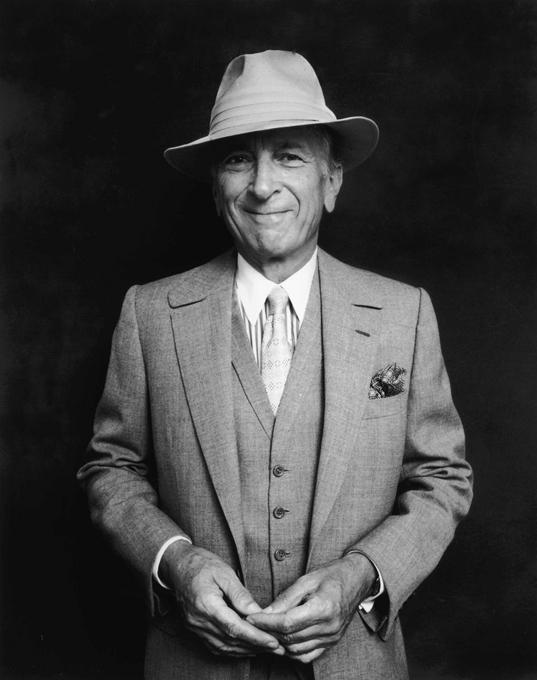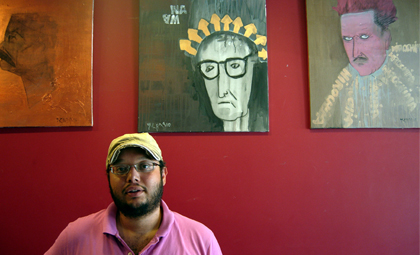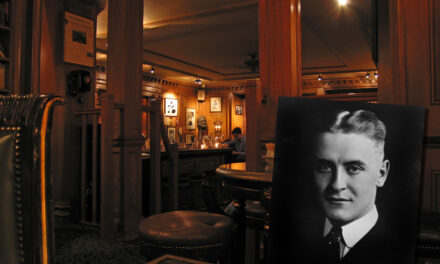American author Gay Talese advises budding writers to pursue ideas that don’t seem obvious.

Author Gay Talese. Newscom
“If you want to know about me, everything is online,” quipped Gay Talese. “Did you read the interview by Katie Roiphe for The Paris Review?”
I replied that I had. I gripped the phone tighter and said, “I am a journalist for the Dinner Jacket, a Canadian online newspaper, and I would like to ask you a few questions regarding, as I see it, the lack of nonfiction profiles on immigrants.”
After a short silence, I mentioned I wanted to write a book on cabdrivers. We settled on a date and I began to make preparations.
Gay Talese is perhaps best known for a 1966 Esquire piece, “Frank Sinatra Has a Cold.” But he frequently wrote about ordinary working people in his many articles and books. He has profiled doormen, busboys, and cleaning ladies in skyscrapers. He once interviewed the man responsible for maintenance of the Times Square billboards. In his most recent book, “A Writer’s Life,” he described the perils of being a dishwasher at an unsuccessful restaurant.
Much of Talese’s work is based on conversations with ordinary folks. I admire his stories; they had sparked my determination to make Talese my mentor, at least for one day.
Two weeks later I found myself staring up at Talese’s home on the Upper East Side of Manhattan. With one last tug at my black cocktail dress, which I deemed appropriate for the style-conscious sophisticate, I climbed the iron staircase to the front entrance and rang the buzzer, running my fingers over a gold-plated inscription bearing his last name. As an eruption of barking sounded from the third floor, I pushed a copy of his book, “Portraits & Encounters,” deep into my purse. Within moments I was welcomed into his home.
There he stood, in a third-generation Christiani suit, red tie, and gold watch, looking as dapper as I had seen in photographs.
“Should I take off my shoes?” I asked. “No, that is fine,” he replied. “Would you like a glass of water?” I thanked him as we proceeded through a long narrow hallway into the living room. I took a seat in a blue corduroy chair and gathered some notes as he disappeared into the kitchen.
We began with a disagreement. I mentioned the lack of nonfiction profiles in newspapers and magazines, to which he abruptly replied: “The New York Times does a great job writing about people, especially the Sunday Style and Metropolitan sections.” Not convinced, I asked whether journalists feared immigrants. Or did they lack interest in ordinary people and regard them as not newsworthy enough?
“I don’t think fear is involved,” Talese assured me. “Generally, journalists are not afraid of anything. What they do not have is interest; sometimes journalists are guided by the front-page hard-news story. They tend to stay away from soft news – feature stories.”
“You cannot fake interest,” he added.
For Talese, journalism boils down to curiosity – a hunger for the story and the perseverance to continue without the validation of others. “Curiosity propels any young journalist,” he said, “and then the patience and capacity to follow up on it.” He stressed the importance of knowing people so well that their stories can be written with the utmost precision. “What requires sometimes the imagination of the journalist is to follow up on an idea that is not so obvious.”
I brought up my idea of writing about cabdrivers, to which he countered: “On cabdrivers you are getting everything secondhand. You are not a cabdriver; you sit in the back of a cab.” He recommended I write about something more familiar, my experiences in the service industry: “Potentially, you can do a very fine essay on your personal experience as a coat- and hat-check girl.”
Here the interview took an abrupt turn, and I was suddenly on the receiving end of the questions:
Talese: You say that you check coats?
Me: At the Harvard Club.
T: Did you write about checking coats – what the experience was like?
Me: I have a journal; I never wrote a full article.
T: Now, why didn’t you? I want to know why you are not writing about hat checkers checking hats. It seems to me you should write about what you know. Tell me what is it like?… How many coats do you check a day?
Me: There are about 600 to 700 hangers. During bridal parties we check about 500 coats.
T: Do you accept tips?
Me: We are not allowed to accept tips but if members give, we accept.
T: Have you ever had a coat missing?
Me: Never.
T: Has anyone ever stolen a coat?
Me: Never.
T: Besides the fact that nothing ever went wrong, are you saying that nothing goes wrong?
Me: We misplaced coats and the numbers on the hangers – 556 with 565 – but we always find the coats.
T: So you are dyslexic? Do you need to write the numbers down?
Me: No. One number we give to the member, the other we keep. When it rains, tickets get wet and the coats smell bad.
T: Maybe you should write about the problems in the coat room on a rainy day. You should write about what you know – about your affliction with getting the numbers right.
Me: Right.
T: Write it well enough. If you want to write something that can last – meaning something that can be read months, years after you write it because the writing is good, the story is interesting, because the choice of language is superior, it is clear to a large range of readership – have the willingness to rewrite your story.
To achieve all these goals it takes time, after doing it again and again. You have to polish it. It will not be right the first time, second, or third. A lot of people are not that patient.
A short time later I was hunched over a small table at a Madison Avenue cafe, more energized by my experience than by the espresso in my hand. I left the cafe and headed to the Harvard Club, pen and paper in hand.





